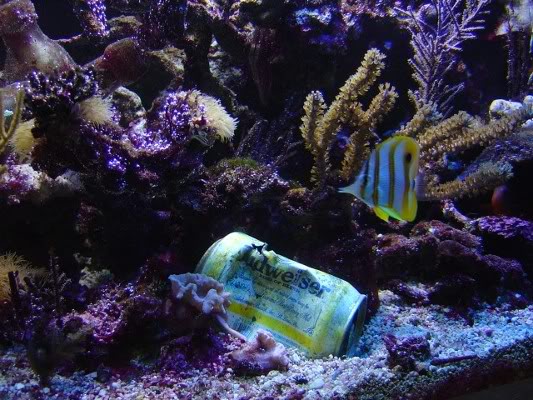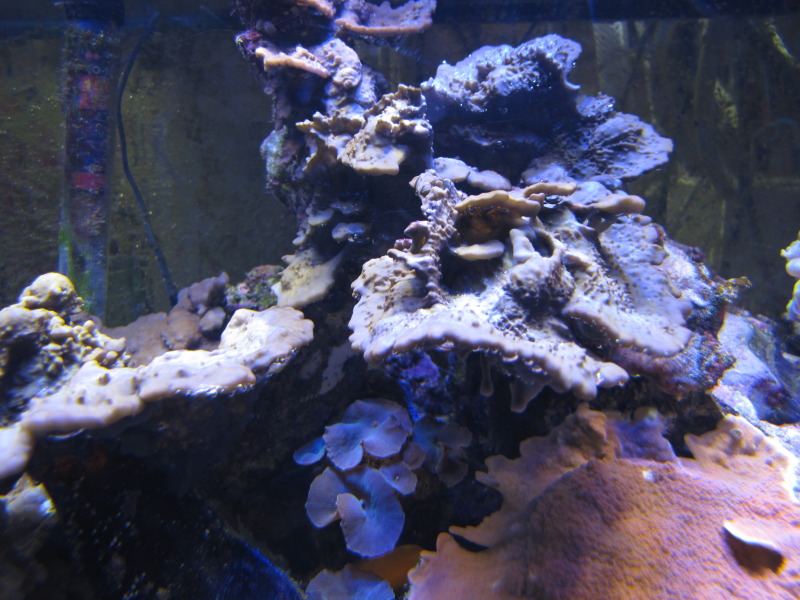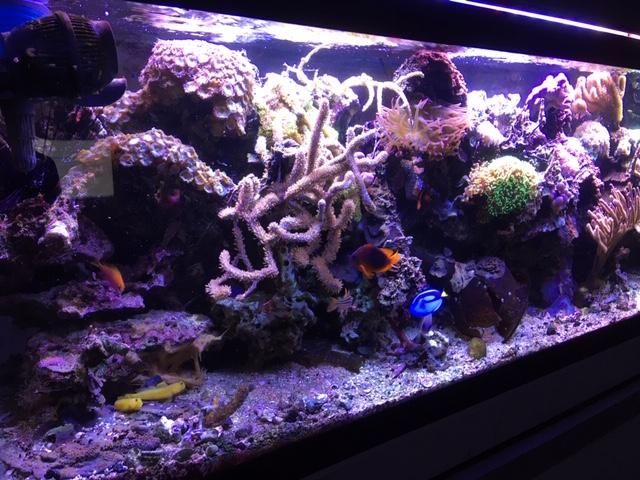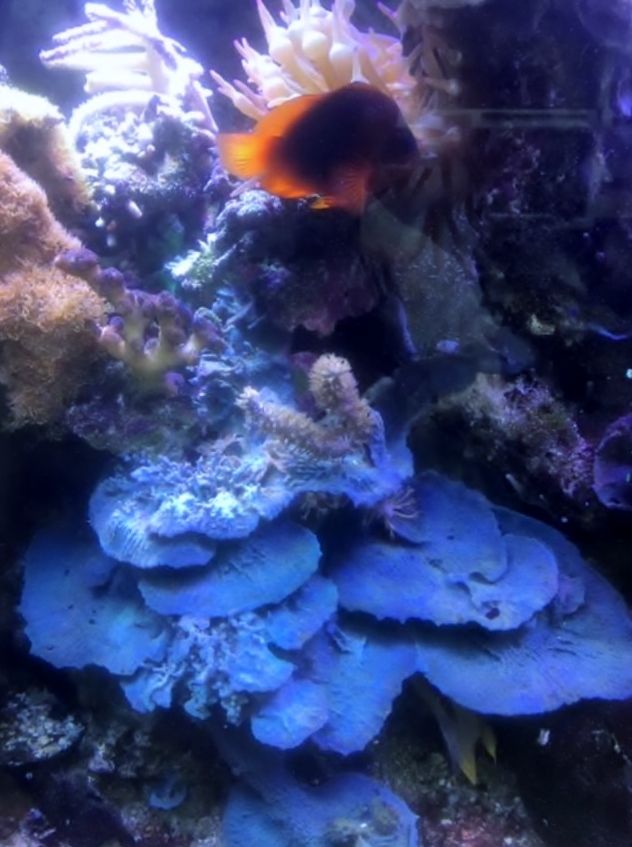I want to thank everyone who has voted so far! I find this topic very interesting and I love getting the thoughts of the reefing community! 
Navigation
Install the app
How to install the app on iOS
Follow along with the video below to see how to install our site as a web app on your home screen.
Note: This feature may not be available in some browsers.
More options
You are using an out of date browser. It may not display this or other websites correctly.
You should upgrade or use an alternative browser.
You should upgrade or use an alternative browser.
How long for dry rock to function like live ocean rock
- Thread starter Brandon McHenry
- Start date
- Tagged users None
So with that said, do you feel that there is a reasonable way to introduce all of the beneficial organisms to a dry rock tank in a manner that would one day turn dry rock into rock that is “functionally similar” to ocean rock? Or do you think there is no substitute?
This is easy. Get some rock from the ocean. Any ocean. You will not be able to introduce any where near the amount of life that there is in the ocean if you depend on silly things like bacteria in a bottle or stuff from a LFS.
I also realize many people don't live near the sea. I can't help that but almost everyone can buy live rock from someplace.
I use rocks from New York because thats where I live, but no matter where I lived, if I wanted a natural reef tank where it is "similar" to the ocean, I would add something from the ocean.
I feel my tank is "similar" to the ocean because thats what I do. Of course if you are worried about introducing things that you consider a threat (I don't) then there isn't much you can do because those creatures live in the same place and in the same numbers that beneficial organisms do.
In over fifty years of adding mud, rocks and water from the sea, I don't even remember adding anything that was much of a problem.
Of course, you may want to remove some of the larger things.

This is a good point. There are several places like KP Aquatics and Tampa Bay Saltwater that sell live rock that is aquacultured in the ocean that is not only sustainable but also provides reefers with all sorts of beneficial organisms. I think that seeding the tank with rocks from the ocean seems to be the best way to introduce all of the beneficial organisms that are so important in keeping our reef tanks healthy. The fear of unwanted pests is definitely a concern that Ive seen increasing over the years. However, it is true that all of the live that we want comes from the same place and it may just be one of the many necessary risks that we take in this hobby. While the beer can is unfortunately becoming more and more common on natural reefs, its not the nicest thing to look at LOLThis is easy. Get some rock from the ocean. Any ocean. You will not be able to introduce any where near the amount of life that there is in the ocean if you depend on silly things like bacteria in a bottle or stuff from a LFS.
I also realize many people don't live near the sea. I can't help that but almost everyone can buy live rock from someplace.
I use rocks from New York because thats where I live, but no matter where I lived, if I wanted a natural reef tank where it is "similar" to the ocean, I would add something from the ocean.
I feel my tank is "similar" to the ocean because thats what I do. Of course if you are worried about introducing things that you consider a threat (I don't) then there isn't much you can do because those creatures live in the same place and in the same numbers that beneficial organisms do.
In over fifty years of adding mud, rocks and water from the sea, I don't even remember adding anything that was much of a problem.
Of course, you may want to remove some of the larger things.

WEll, I did find that can in the sea, so I figured it was natural. 
Many of us feel we have to add things from a bottle or something we have to buy. But virtually all of that stuff is free if we just look for it. In the beginning I used to put garden soil in my tank for bacteria. Now I feed live whiteworms and every time I do that, I also inadvertently add some of the dirt the worms live in. Dirt is natural and I feel most of our tanks are much to clean which is why so many of us have problems.
A natural tank means to me, to add stuff from nature. Nature never put bacteria in a bottle.
Many of us feel we have to add things from a bottle or something we have to buy. But virtually all of that stuff is free if we just look for it. In the beginning I used to put garden soil in my tank for bacteria. Now I feed live whiteworms and every time I do that, I also inadvertently add some of the dirt the worms live in. Dirt is natural and I feel most of our tanks are much to clean which is why so many of us have problems.
A natural tank means to me, to add stuff from nature. Nature never put bacteria in a bottle.
This is an interesting take that I hadn't really heard before. I like the idea of having a tank that has lots of beneficial life growing in it as opposed to a sterile system. Do you happen to have a picture of your tank? Id be curious to see!WEll, I did find that can in the sea, so I figured it was natural.
Many of us feel we have to add things from a bottle or something we have to buy. But virtually all of that stuff is free if we just look for it. In the beginning I used to put garden soil in my tank for bacteria. Now I feed live whiteworms and every time I do that, I also inadvertently add some of the dirt the worms live in. Dirt is natural and I feel most of our tanks are much to clean which is why so many of us have problems.
A natural tank means to me, to add stuff from nature. Nature never put bacteria in a bottle.
Cool tank, I really like the gorgonians! Is that a clam? or no?
From the angle it looked kind of like a clam mantle. Thats awesome though! Is that the photosynthetic sponge? I had a small piece once but it died in a tank transfer. About how big is that and how long have you had it?
Yes, it's photosynthetic.
It's all over my tank and if I didn't trim it, It would be all that is in the tank. I don't remember when I first got it, but it may be 15 or 20 years ago.
It is encrusting but I like it and think it looks like blue montipora.
But besides that, I feel it is a fantastic water purifier.
As for the natural part. If I lift a rock in my tank, I will see worms, starfish and amphipods scurrying all over the place and feel this stuff is natural for a healthy tank. All of that stuff, (as well as the fish) spawn all the time contributing to the health of the corals and gorgonians.
Like I said, most tanks are to clean and that is IMO not healthy.


It's all over my tank and if I didn't trim it, It would be all that is in the tank. I don't remember when I first got it, but it may be 15 or 20 years ago.
It is encrusting but I like it and think it looks like blue montipora.
But besides that, I feel it is a fantastic water purifier.
As for the natural part. If I lift a rock in my tank, I will see worms, starfish and amphipods scurrying all over the place and feel this stuff is natural for a healthy tank. All of that stuff, (as well as the fish) spawn all the time contributing to the health of the corals and gorgonians.
Like I said, most tanks are to clean and that is IMO not healthy.

Wow! I cant even imagine having something in my tank for 15 or 20 years, thats crazy! Great job at having such a natural reef, the amount of sponge and other life in the tank is so cool.Yes, it's photosynthetic.
It's all over my tank and if I didn't trim it, It would be all that is in the tank. I don't remember when I first got it, but it may be 15 or 20 years ago.
It is encrusting but I like it and think it looks like blue montipora.
But besides that, I feel it is a fantastic water purifier.
As for the natural part. If I lift a rock in my tank, I will see worms, starfish and amphipods scurrying all over the place and feel this stuff is natural for a healthy tank. All of that stuff, (as well as the fish) spawn all the time contributing to the health of the corals and gorgonians.
Like I said, most tanks are to clean and that is IMO not healthy.

I think dry rock takes 1-2 years to mature.
But I also believe you can still get a lot of diversity in your tank by buying at different lfs, buying or trading with local hobbyists, buying from various online vendors. And then you get good hitchhikers (maybe bad) along with that stuff and it just diversified your tank even more.
Having real ocean live rock is great, but imo not necessary to grow a great reef.
But I also believe you can still get a lot of diversity in your tank by buying at different lfs, buying or trading with local hobbyists, buying from various online vendors. And then you get good hitchhikers (maybe bad) along with that stuff and it just diversified your tank even more.
Having real ocean live rock is great, but imo not necessary to grow a great reef.
Very true. I have seen many successful tanks started from dry rock. Its just a matter of how you seed them with all of the beneficial life, and like you said, that can come from frags, fish, rock, etc. I do feel like there is a longer break in period with dry rock tanks and it is sometimes not for the feint of heart. There are of course pros and cons to each which is why I find this discussion so intriguing and beneficial to reefers of all levels. The goal for all of us is to have a mature and successful reef tank and its really fun to hear all of the onions on how to get there and what it takes to achieve biodiversity and maturity in our personal slices of the oceanI think dry rock takes 1-2 years to mature.
But I also believe you can still get a lot of diversity in your tank by buying at different lfs, buying or trading with local hobbyists, buying from various online vendors. And then you get good hitchhikers (maybe bad) along with that stuff and it just diversified your tank even more.
Having real ocean live rock is great, but imo not necessary to grow a great reef.
I am thinking that the dark period of your tank would be a good time to introduce the copepods and other micro fauna.into you system as the predator's will be low. seed those little guys just before the first fish goes in.
Agreed! Ive done copepod additions to a few existing reef tanks and even with the lights out Ive still seen some of the better hunting fish go after them. I like adding them to the refugium if the tank is running one. I still think it so cool to add the pods and a few weeks later see them darting across the glass or seeing the fish hunt for them.I am thinking that the dark period of your tank would be a good time to introduce the copepods and other micro fauna.into you system as the predator's will be low. seed those little guys just before the first fish goes in.
If you are phrasing the question as “function like the ocean” then I agree with @andrewey and others who cite the appearance of sponges and other fauna as mature rock capable of similar processes as ocean reef rock.
Maybe this can be sped up with additives beyond nitrifying bacteria, like sponge kits such as those provided by Steve Tyree/Reef Farmers, but I don’t think most hobbyists are starting tanks this way... yet
Some of my rock (dry rock but not man made, from fiji) at 6 years is finally looking like reef rock...
Lots of grey/black sponge:

Cryptic zone of fuge with calcium tube forming worms:

This sponge formed over 2-3 years between some rocks. Looks small in the photo but it is 5-6”. I didn’t know it was there until I rescaped some rockwork:

So that is my reason for saying 2 years
Maybe this can be sped up with additives beyond nitrifying bacteria, like sponge kits such as those provided by Steve Tyree/Reef Farmers, but I don’t think most hobbyists are starting tanks this way... yet
Some of my rock (dry rock but not man made, from fiji) at 6 years is finally looking like reef rock...
Lots of grey/black sponge:
Cryptic zone of fuge with calcium tube forming worms:
This sponge formed over 2-3 years between some rocks. Looks small in the photo but it is 5-6”. I didn’t know it was there until I rescaped some rockwork:
So that is my reason for saying 2 years
I agree that sponges are a great indicator of our reefs moving to that "next step" of maturity. Same with the tube worms, these are animals you tend not to see in younger reefs that are not started with ocean rock. I hadnt heard much about the sponge starter packs but I really like the idea of being able to "supercharge" the diversity of a reef tank. Thats a pretty impressive sponge that just grew without you purposefully trying to. Thanks for your thoughts!If you are phrasing the question as “function like the ocean” then I agree with @andrewey and others who cite the appearance of sponges and other fauna as mature rock capable of similar processes as ocean reef rock.
Maybe this can be sped up with additives beyond nitrifying bacteria, like sponge kits such as those provided by Steve Tyree/Reef Farmers, but I don’t think most hobbyists are starting tanks this way... yet
Some of my rock (dry rock but not man made, from fiji) at 6 years is finally looking like reef rock...
Lots of grey/black sponge:

Cryptic zone of fuge with calcium tube forming worms:

This sponge formed over 2-3 years between some rocks. Looks small in the photo but it is 5-6”. I didn’t know it was there until I rescaped some rockwork:

So that is my reason for saying 2 years
Yep, a plating red monti cap was growing between two rocks and I really hated how the aquascape looked. When I tore it apart I found this huge sponge.I agree that sponges are a great indicator of our reefs moving to that "next step" of maturity. Same with the tube worms, these are animals you tend not to see in younger reefs that are not started with ocean rock. I hadnt heard much about the sponge starter packs but I really like the idea of being able to "supercharge" the diversity of a reef tank. Thats a pretty impressive sponge that just grew without you purposefully trying to. Thanks for your thoughts!
My wife and I are moving over the next year. Her job starts in July in the new city, mine later next year... so two houses for a year and I’m wondering how to safely move my reef... so I have some live rock I can split between the old/new tanks, but have been reading on how to accelerate the maturation process. That’s when I started really digging into the cryptic threads, etc.
So I’ll be ordering from reef farmers sometime in the Fall.
I think the question is flawed.
How long until dry rock functions as ocean live rock?
In what context?
Cycle? Weeks
Encrusting algae? Months
Biodiversity? Never
Most people voted from 6 months to 2 years. And yes this is true for cycling and allowing the bacterial population to reach some sort of stability but is it anywhere near live rock from a natural reef in terms of biodiversity and bacterial diversity ? Never.
How long until dry rock functions as ocean live rock?
In what context?
Cycle? Weeks
Encrusting algae? Months
Biodiversity? Never
Most people voted from 6 months to 2 years. And yes this is true for cycling and allowing the bacterial population to reach some sort of stability but is it anywhere near live rock from a natural reef in terms of biodiversity and bacterial diversity ? Never.
- Joined
- Jan 24, 2020
- Messages
- 439
- Reaction score
- 759
Hard question to answer imo. Obviously if its not seeded it can take forever to get a diverse population microfauna in the tank. Especially the way we dip corals. Even then I feel it wouldn’t ever be the same as live rock. But I am no expert. Maybe I have never had a tank set up long enough to see it happen.
My past two tanks were set up with either only live rock, or a mix of dry and live. My recent tank was started with dry because its so much easier to aquascape. Once I was ready, I finished with KP Aquatics live rock and it has really changed my tank for the best. Lots of creatures in that rock. I was lucky enough not to get any bad stuff. I was having issues with dusty diatoms but they disappeared after a few days of adding the live rock. However, even four months in most microfauna prefers the live rock and hasn’t spread much to the dry, besides coraline algae. I don’t see any worms, or even pods on that rock. Maybe it needs more time, idk.
I am a fan of live rock, I have more success with it. But to each their own! There are beautiful tanks with dry rock. But I have always had algae problems with dry.
My past two tanks were set up with either only live rock, or a mix of dry and live. My recent tank was started with dry because its so much easier to aquascape. Once I was ready, I finished with KP Aquatics live rock and it has really changed my tank for the best. Lots of creatures in that rock. I was lucky enough not to get any bad stuff. I was having issues with dusty diatoms but they disappeared after a few days of adding the live rock. However, even four months in most microfauna prefers the live rock and hasn’t spread much to the dry, besides coraline algae. I don’t see any worms, or even pods on that rock. Maybe it needs more time, idk.
I am a fan of live rock, I have more success with it. But to each their own! There are beautiful tanks with dry rock. But I have always had algae problems with dry.
Similar threads
- Replies
- 3
- Views
- 51
- Replies
- 17
- Views
- 1,203
- Replies
- 1
- Views
- 130



















